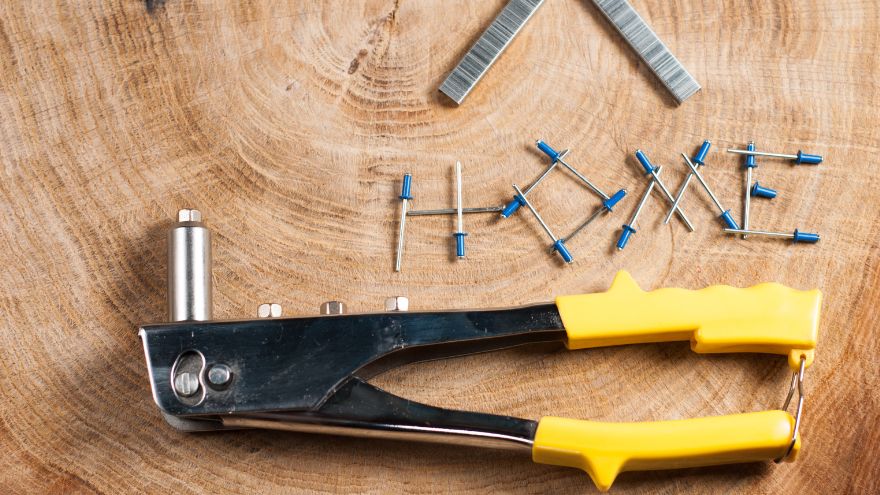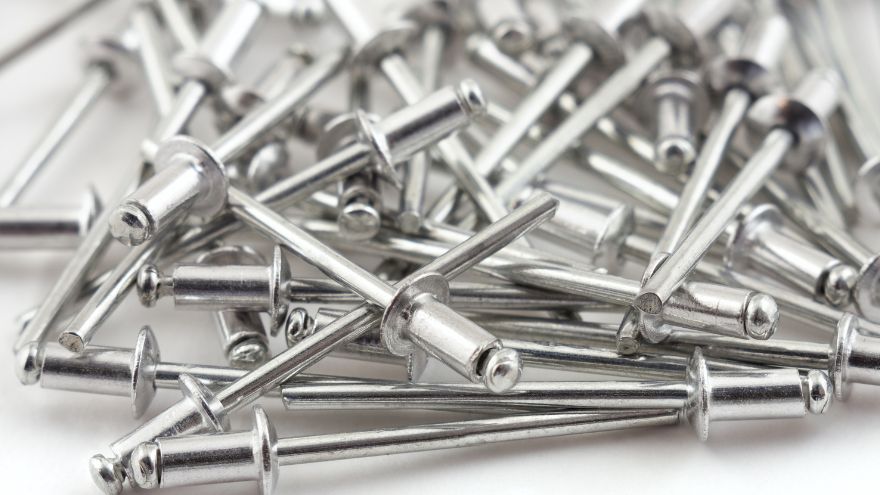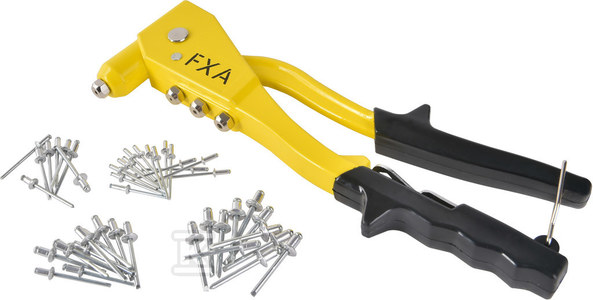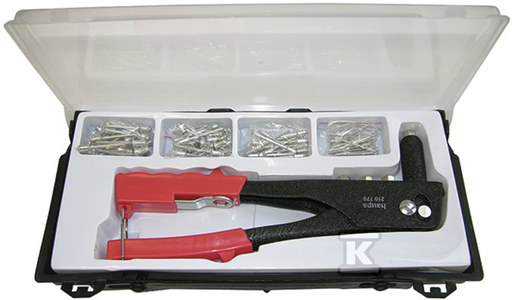Due to the great universality of riveting, it is worth saying a little more about this technique. In the new article, we explain what it is and list the most important types of rivets and riveting machines intended for them. We also advise you how to use these tools correctly.

Rivets are among the most important types of connections. They have been used on a large scale since the 19th century. It was then that the first large steel structures were built, including the famous Eiffel Tower. However, riveting is a truly versatile technology and its range of applications is not limited to construction. Rivets are used, among others, in transport, tank construction, leather making, bicycle industry and many industries. They are also commonly found in non-professional DIY.
Check out riveters and rivets at the Onninen wholesaler
How does a riveter work?
In the nearly 200 years since the first rivets were developed, many types have been created. In the original variant, which is not very common today, the rivet has the form of a metal rod of relatively short length. It is ended on both sides - on one side with a fixed head and on the other - with a sealed ferrule. Currently, blind rivets are the most widely used. They consist of two elements:
sleeves in the form of a tube with a mushroom-shaped head:
nail (stem) ending with a bead with a diameter slightly larger than the inner diameter of the sleeve.
Riveting with blind rivets involves pulling the nail through the sleeve with great force. To generate the force, it is necessary to use a riveter. As a result of the forces acting on the sleeve, it swells and the nail breaks. The finished connection gains stability thanks to bilateral pressure on the connected elements. On the one hand, it is exerted by the head of the sleeve, and on the other - by the resulting swelling.

Types of rivet gun and rivets
 A riveter is a tool available in three basic variants. When it comes to the type of drive, we distinguish manual, pneumatic and electric (battery) models. Due to their low price and good availability, the former are more widely used. Their use is also supported by their low weight and portability, which makes them easier to carry in a work trouser pocket or on a tool belt.
A riveter is a tool available in three basic variants. When it comes to the type of drive, we distinguish manual, pneumatic and electric (battery) models. Due to their low price and good availability, the former are more widely used. Their use is also supported by their low weight and portability, which makes them easier to carry in a work trouser pocket or on a tool belt.
Electric riveters are used primarily by professional fitters and other specialists who perform dozens or even hundreds of rivet joints a day. Their undoubted advantage is work efficiency, but the battery increases their weight, which in some cases makes transport difficult. Pneumatic models are intended for stationary use - primarily on assembly lines equipped with compressed air installations.
In addition, riveting machines are divided according to their purpose - specifically the type of rivets they handle. These come in many variants, differing in structure and, consequently, in properties and purpose. These are:
rivets standard versatile in use and available in versions made of various types of steel;
open rivets : they are quite cheap, but their low strength allows them to be used only in lightly loaded places;
closed rivets : with a structure that does not cause the nail to break, valued for its greater water resistance than standard ones;
tight rivets : fully waterproof, used in structures exposed to constant contact with moisture;
forked rivets : designed for joining elements made of soft materials, such as plastics, wood or leather;
expansion rivets : they are distinguished by high pressure force and tensile resistance;
recessed rivets : used when the rivet cannot protrude above the surface of the element;
grooved rivets for blind holes.
How to use a rivet gun?
 The riveting technique depends on several factors - primarily the type of riveter and the rivets themselves. Since hand riveters and standard blind rivets are the most commonly used, we will focus on them in our article. The first step to making a riveted connection is to drill holes and insert the rivet through them. This should be grasped with a riveter and then pulled vigorously several times. Once the sleeve has swollen and the pin has broken off, the connection is ready.
The riveting technique depends on several factors - primarily the type of riveter and the rivets themselves. Since hand riveters and standard blind rivets are the most commonly used, we will focus on them in our article. The first step to making a riveted connection is to drill holes and insert the rivet through them. This should be grasped with a riveter and then pulled vigorously several times. Once the sleeve has swollen and the pin has broken off, the connection is ready.
For the stability of the connection, not only the selection of the appropriate solution is important, but also the quality of the rivets and the riveter. Being aware of this, in the Onninen store we offer only the best rivets and tools from recognized manufacturers - e.g. Fxa riveter (model 501810050 with 40 rivets) or Haupa riveter (model 210776 for rivets from 2.4 to 5 millimeters) and Modeco Home. Our employees also provide professional assistance in selecting optimal solutions.